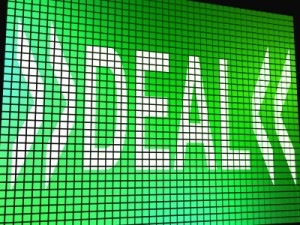How’s It Been, Green Deal?
 The Green Deal has officially been launched to the public last 28 January 2013 and how do you think is it going for the Government’s flagship green scheme? The Green Deal was first introduced as a part of the Energy Act of 2011 as a way for homeowners in and around the UK to have improved energy-efficiency measures without the upfront costs.
The Green Deal has officially been launched to the public last 28 January 2013 and how do you think is it going for the Government’s flagship green scheme? The Green Deal was first introduced as a part of the Energy Act of 2011 as a way for homeowners in and around the UK to have improved energy-efficiency measures without the upfront costs.
It does sound inviting for those who can’t afford a combination of expenses for insulation and other energy efficiency measures but is there more than the Green Deal that meets the eye?
What is the Green Deal?
According to Gov.uk’s website, the Green Deal is a scheme that allows homes and businesses to get energy-saving improvement without having to pay all the costs up front. Under this scheme, homeowners have the option to choose energy-saving improvements such as:
- Heating
- Double glazing
- Draught-proofing
- Insulation (loft or cavity wall insulation)
- Renewable energy technologies (solar panels and wind turbines)
So how does one pay for these home improvement measurements? Repayments will be reflected on a household’s electricity bill with an interest rate. This scheme is said to help reduce monthly heating bills since you will be using less electricity, oil, or gas but your actual energy usage still plays a huge role on the cost of energy. The loan will be tied to the property and not the person who applied for the Green Deal.
Public Reaction
Just a few weeks after the launch of the Green Deal, how did the general public react? Were they even knowledgeable of the Green Deal? According to a poll conducted by YouGov, 61% of the public are not aware or have heard of the Green Deal.
Their survey included 1,960 adults which revealed that 39 per cent of the participants were actually aware of the scheme. Awareness was highest amongst men aged over 60. Although 61% seems to be a big number, many from the industry think that this is a good and encouraging sign that the Green Deal may prosper.
Executive director of Behaviour Change, David Hall, said that “From a marketing perspective having over a third of the public aware of a new product or service within a week of its launch is a very creditable performance.”
Another industry expert, Ian Cheshire, also shared the same view saying “It’s very encouraging to see that the Green Deal is already beginning to cut through so early in its existence.”
Maybe after a few weeks, the number of people aware of the Green Deal will increase and hopefully, a huge number of interested applicants will come and try the scheme.
How to Join the Green Deal
To join the Green Deal, there are four steps which can guide you through the process.
Step 1: Get Assessed
Have your property assessed by a Green Deal assessor to find out what improvements are needed in your property and how much you could possibly save through the energy-efficient home improvement measures.
Step 2: Find a Green Deal Provider
Green Deal providers will carry out the home improvement measures you want and find out whether the Green Deal is really right for your home. You can discuss with your provider different concerns and things that you need to complete in the process.
Step 3: Sign the Green Deal Plan
The Green Deal Plan is a contract stating the amount of work to be done and how much it will cost you. Once this is signed, your Green Deal provider will find an installer to do the necessary work.
Step 4: Payment through Installation
Once all the work has been completed, you will pay off the loan reflected on your electricity bill through instalments.
If you are a business entity or a landlord, there is a different set of procedures for you to follow. You can find more information about it on Gov.uk’s website.
Since the Green Deal’s launch is relatively fresh, it is showing a good performance among the public. Hopefully, more people will start to acknowledge this as a reliable way of getting home improvement and energy efficiency measures without any problems.
